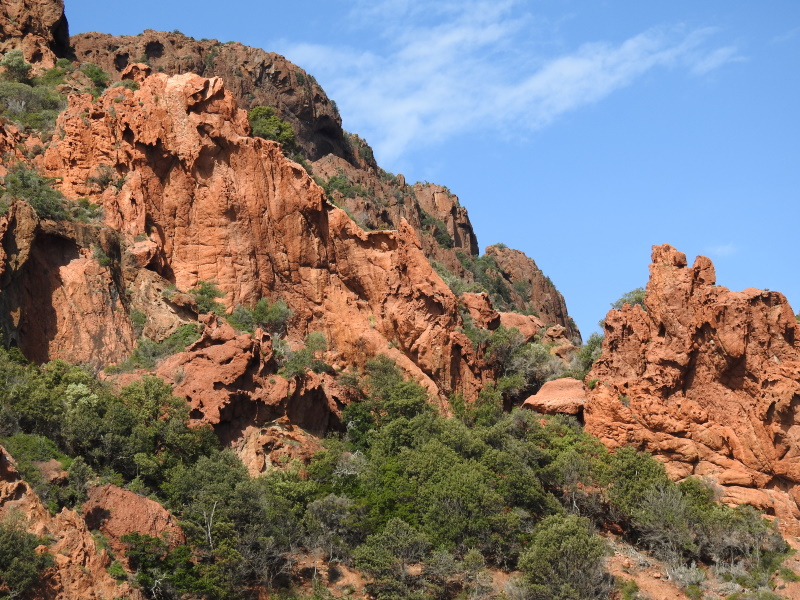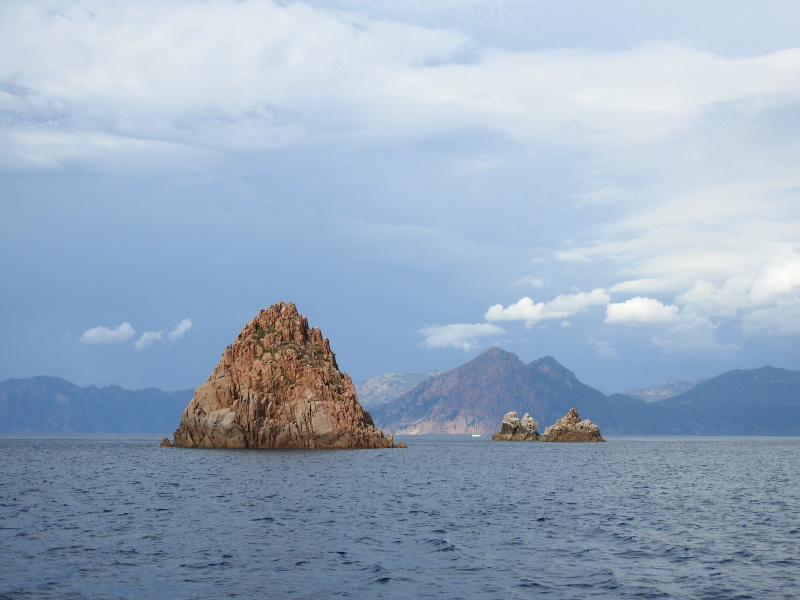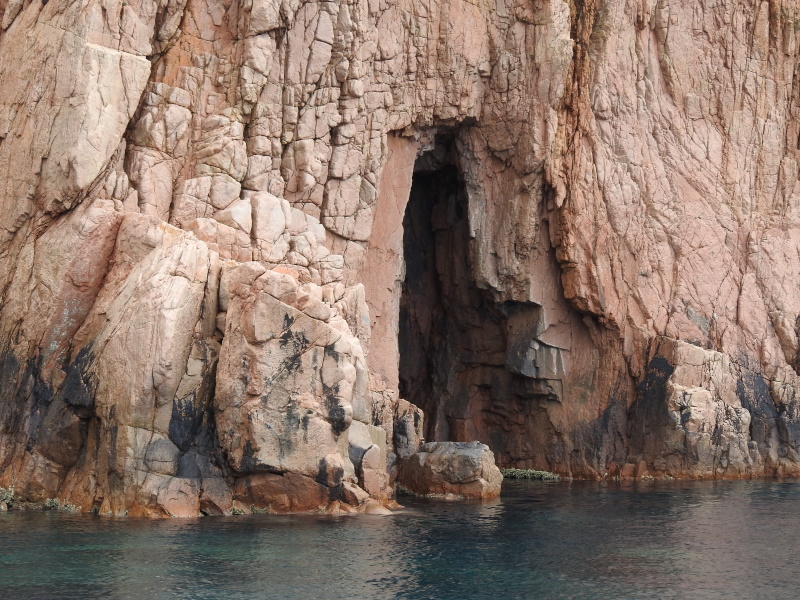Blog WHS Visits
WHS #739: Gulf of Porto
At spot #728 this is one of the lesser visited sites in Europe among our community members. It comprises a coastal area in northwestern Corsica, recognized for both its marine and terrestrial features. The cumbersome name probably doesn’t help to market it: “Gulf of Porto: Calanche of Piana, Gulf of Girolata, Scandola Reserve” actually comprises one integral core zone with three distinct parts. Only the Calanche of Piana (the correct name should be the plural I think - Calanches of Piana) actually lies in the Gulf of Porto. The Gulf of Girolata is a bay of its own and the Scandola Reserve borders that bay as well.
I visited the site from Ajaccio with 1 of the 2 large companies (Cap Nava, Decouvertes Naturelles) that offer day tours there. My tour costed 59 EUR and we were out for 10 hours on a large ship with some 70 passengers. From Ajaccio it takes 2.5 hours to get to the core zone. If you’re not relying on public transport to get around Corsica as I did, you could start your trip from one of the smaller towns north (Porto, even Girolata). Tours with smaller boats will be available from there. I visited on September 23 and though the low season had started already, there were plenty of boats around.
The Scandola Nature Reserve lies at the northern end of the Gulf of Girolata. We had been crossing a very heavy rain shower on our way north from Ajaccio, but the sky cleared just right on time and the sun actually came out. This is necessary for the rocks to show their beautiful orange-red color. You can see these rock formations not only at the coast but also in the sea. It’s a bit like looking at the karst landscapes in Asia - some of the rocks have anthropomorphic or zoomorphic features.
Around lunchtime we were dropped off at picturesque Girolata, the only village on this coast. About 100 people live here and it can only be reached from the sea or via a footpath. This is the lunch stop for all boats, so there are plenty of restaurants. You can also go for a walk or enjoy the beach. At the beach I found lots of hairy balls, which I recognized from an earlier trip to Formentera as the remains of Posidonia sea grass.
We sailed back southwards, along the third part of this WHS: the Calanches of Piana. This landform covers a deep valley with steep slopes, partly submerged in the sea. It is less green than the Scandola Reserve. Its steep cliffs however are in the same shade of red. We saw an osprey nest up against one of the cliffs – this area upon inscription was one of the few places in Europe where ospreys reproduced, but in recent years they have been making a comeback elsewhere in Europe (even in the Netherlands). We did not see the birds - if I correctly understood the commentary of the French guide on the speakers, they were already on their way to their wintering place in Africa.
The Calanches are also known for their many caves. The small boats around us sailed in and out, but we also came close with our relatively large ship. The skipper always first pushed the nose of the ship against the entrance of a cave, and then turned 180 degrees so that the passengers in the back could also have a look. Just like earlier in the day at the Scandola Reserve, there was ample time to photograph every rock, view or cave.
Despite the fact that we rarely hear about it, like so many other WHS this has suffered from overtourism in the last decades. While an estimated 30,000 people visited Scandola each year in the 1980s, this had risen to 1.1 million between April and October 2012. The threatened and protected population of ospreys for example has been plummeting in the Reserve. “A joint Franco-Italian study … has shown that tourist activities constantly disturb ospreys at the end of their reproductive season, leading to a decline in reproductive success.”
Els - 11 October 2020
Comments
Astraftis 14 October 2020
Well, often English sticks to the original plural form, that's why I intervened :-) However, we might try an interesting mixed form calancas, which sounds quite Spanish!
Els Slots 11 October 2020
Thanks Astraftis for pointing this out. In the Corsican language it is the same as in Italian, but translated into for example French, English and Dutch they suddenly get an -s at the end.
Astraftis 11 October 2020
Just as a very minor note, “calanche” is already in the plural form in Italian! ;-) The singular is calanca (or calanco, masculine). I know its meaning of particular eroded rocks, but here it should be in connection with “cala” (bay).


